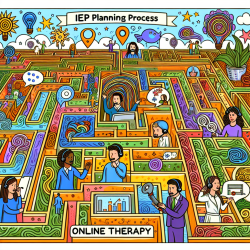Introduction
In the ever-evolving field of speech-language pathology, data-driven decision-making is crucial for enhancing therapeutic outcomes, especially for children. Recent advancements in biomedical research, particularly in the realm of data retrieval using unstructured texts, offer promising tools that can be adapted to our practice. This blog explores the application of findings from the research article titled Leveraging word embeddings and medical entity extraction for biomedical dataset retrieval using unstructured texts to empower speech-language pathologists in their practice.
Understanding the Research
The research by Wang et al. (2017) presents an innovative information retrieval (IR) system designed to enhance the retrieval of biomedical datasets. This system utilizes advanced techniques such as word embeddings and medical entity extraction to improve the precision and relevance of retrieved datasets. These methodologies, while rooted in biomedical research, have potential applications in speech-language pathology, particularly in developing personalized therapy plans and tracking progress.
Applying Word Embeddings in Practice
Word embeddings, a deep learning-based technique, can transform how we understand and categorize linguistic data. By representing words as dense vectors, word embeddings capture semantic relationships and contextual nuances. In speech-language pathology, this can be applied to:
- Enhance Vocabulary Development: Use word embeddings to identify semantically related words, enriching vocabulary interventions for children.
- Personalize Therapy: Tailor therapy sessions by understanding the contextual use of words specific to a child's environment and experiences.
Leveraging Medical Entity Extraction
Medical entity extraction involves identifying and categorizing key terms from unstructured text. In our field, this can be adapted to:
- Streamline Assessment: Quickly identify relevant linguistic features from assessment reports, aiding in efficient diagnosis and treatment planning.
- Monitor Progress: Track changes in language use and development over time by extracting and analyzing key linguistic entities from session notes.
Encouraging Further Research
While the research provides a robust framework, it is essential for practitioners to engage in continuous learning and adaptation. By exploring the integration of these techniques into practice, speech-language pathologists can contribute to a growing body of evidence that supports data-driven therapeutic interventions.
Conclusion
Incorporating advanced data retrieval techniques such as word embeddings and medical entity extraction into speech-language pathology can significantly enhance therapeutic outcomes for children. By embracing these innovations, practitioners can offer more personalized, effective interventions, ultimately leading to better developmental trajectories for their young clients.
To read the original research paper, please follow this link: Leveraging word embeddings and medical entity extraction for biomedical dataset retrieval using unstructured texts.










